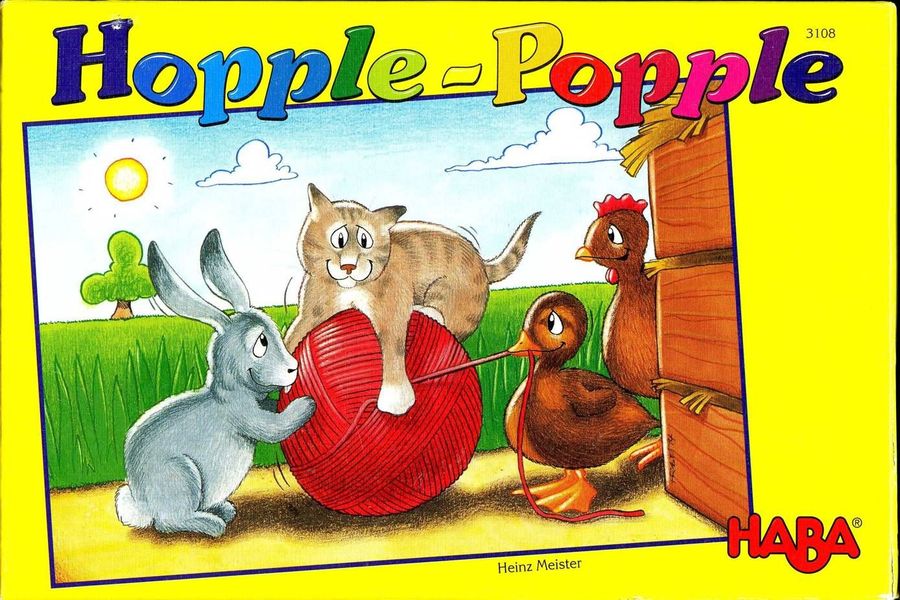Hopple-Popple (1995) Board Game
Hopple-Popple is a delightful children’s board game released in 1995 by HABA, a well-known publisher of family-friendly games. Designed by Heinz Meister and featuring artwork by Franz Vohwinkel, Hopple-Popple is a dice rolling and set collection game that is perfect for young players aged 3 and up.
Game Components of Hopple-Popple
How To Setup Hopple-Popple
To set up Hopple-Popple, each player receives a board showing the outlines of eight animals (2 cats, 2 ducks, 2 rabbits, and 2 roosters). The wood animal pieces are placed aside, ready to be matched with their corresponding outlines on the boards.
Gameplay Mechanics and Game Objective
Player Experience
Hopple-Popple is designed to be an engaging and educational game for young children. It helps develop color recognition and matching skills in a fun and interactive way. The game is easy to understand, making it accessible to children as young as 3 years old.
Pros
Cons
Personal Thoughts on Hopple-Popple
Hopple-Popple is an ideal game for parents or caregivers looking to introduce their children to the world of board games. Its simplicity and educational value make it a great tool for developing important cognitive skills in a fun and playful manner. However, it may not be as engaging for older children or adults due to its straightforward and repetitive gameplay.
We are supported by our audience. When you purchase through links on our site, we may earn an affiliate commission, at no extra cost for you. Learn more.

